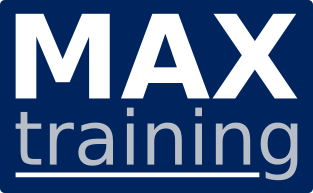Introduction to Machine Learning Models Using IBM SPSS Modeler (V18.2) SPVC
Code: 0E079G-SPVCOverview
Contains PDF course guide, as well as a lab environment where students can work through demonstrations and exercises at their own pace.
This course provides an introduction to supervised models, unsupervised models, and association models. This is an application-oriented course and examples include predicting whether customers cancel their subscription, predicting property values, segment customers based on usage, and market basket analysis.
If you are enrolling in a Self Paced Virtual Classroom or Web Based Training course, before you enroll, please review the Self-Paced Virtual Classes and Web-Based Training Classes on our Terms and Conditions page, as well as the system requirements, to ensure that your system meets the minimum requirements for this course. /terms
Audience
- Data scientists
- Business analysts
- Clients who want to learn about machine learning models
Prerequisites
- Knowledge of your business requirements
Objective
Introduction to machine learning models
• Taxonomy of machine learning models • Identify measurement levels • Taxonomy of supervised models • Build and apply models in IBM SPSS Modeler
Supervised models: Decision trees - CHAID • CHAID basics for categorical targets • Include categorical and continuous predictors • CHAID basics for continuous targets • Treatment of missing values
Supervised models: Decision trees - C&R Tree • C&R Tree basics for categorical targets • Include categorical and continuous predictors • C&R Tree basics for continuous targets • Treatment of missing values
Evaluation measures for supervised models • Evaluation measures for categorical targets • Evaluation measures for continuous targets
Supervised models: Statistical models for continuous targets - Linear regression • Linear regression basics • Include categorical predictors • Treatment of missing values
Supervised models: Statistical models for categorical targets - Logistic regression • Logistic regression basics • Include categorical predictors • Treatment of missing values
Association models: Sequence detection • Sequence detection basics • Treatment of missing values
Supervised models: Black box models - Neural networks • Neural network basics • Include categorical and continuous predictors • Treatment of missing values
Supervised models: Black box models - Ensemble models • Ensemble models basics • Improve accuracy and generalizability by boosting and bagging • Ensemble the best models
Unsupervised models: K-Means and Kohonen • K-Means basics • Include categorical inputs in K-Means • Treatment of missing values in K-Means • Kohonen networks basics • Treatment of missing values in Kohonen
Unsupervised models: TwoStep and Anomaly detection • TwoStep basics • TwoStep assumptions • Find the best segmentation model automatically • Anomaly detection basics • Treatment of missing values
Association models: Apriori • Apriori basics • Evaluation measures • Treatment of missing values
Preparing data for modeling • Examine the quality of the data • Select important predictors • Balance the data
Course Outline
Introduction to machine learning models• Taxonomy of machine learning models• Identify measurement levels• Taxonomy of supervised models• Build and apply models in IBM SPSS ModelerSupervised models: Decision trees - CHAID• CHAID basics for categorical targets• Include categorical and continuous predictors• CHAID basics for continuous targets• Treatment of missing valuesSupervised models: Decision trees - C&R Tree• C&R Tree basics for categorical targets• Include categorical and continuous predictors• C&R Tree basics for continuous targets• Treatment of missing valuesEvaluation measures for supervised models• Evaluation measures for categorical targets• Evaluation measures for continuous targetsSupervised models: Statistical models for continuous targets - Linear regression• Linear regression basics• Include categorical predictors• Treatment of missing valuesSupervised models: Statistical models for categorical targets - Logistic regression• Logistic regression basics• Include categorical predictors• Treatment of missing valuesSupervised models: Black box models - Neural networks• Neural network basics• Include categorical and continuous predictors• Treatment of missing valuesSupervised models: Black box models - Ensemble models• Ensemble models basics• Improve accuracy and generalizability by boosting and bagging• Ensemble the best modelsUnsupervised models: K-Means and Kohonen• K-Means basics• Include categorical inputs in K-Means• Treatment of missing values in K-Means• Kohonen networks basics• Treatment of missing values in KohonenUnsupervised models: TwoStep and Anomaly detection• TwoStep basics• TwoStep assumptions• Find the best segmentation model automatically• Anomaly detection basics• Treatment of missing valuesAssociation models: Apriori• Apriori basics• Evaluation measures• Treatment of missing valuesAssociation models: Sequence detection• Sequence detection basics• Treatment of missing valuesPreparing data for modeling• Examine the quality of the data• Select important predictors• Balance the data
Price (ex. VAT)
Duration
Schedule
Please send us a message with the form below
Delivery methods
- Classroom
- On-site (at your location)
- Virtual (instructor online)
